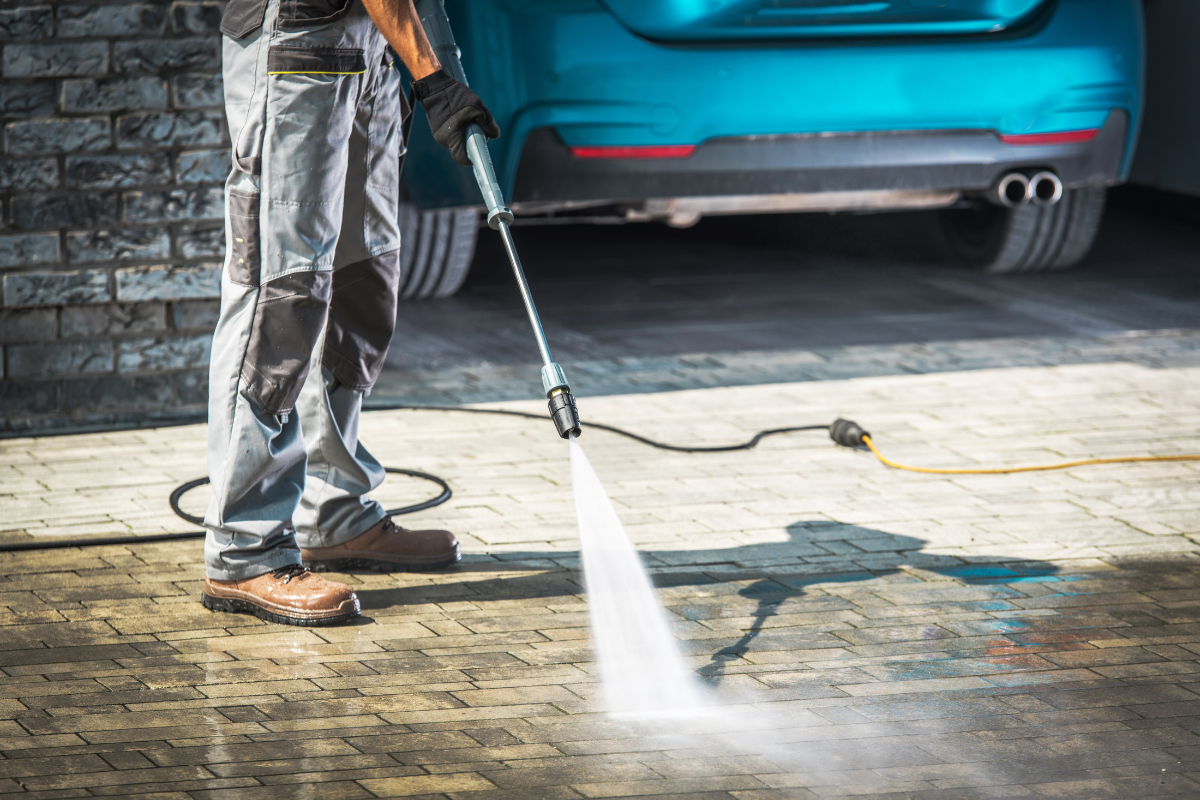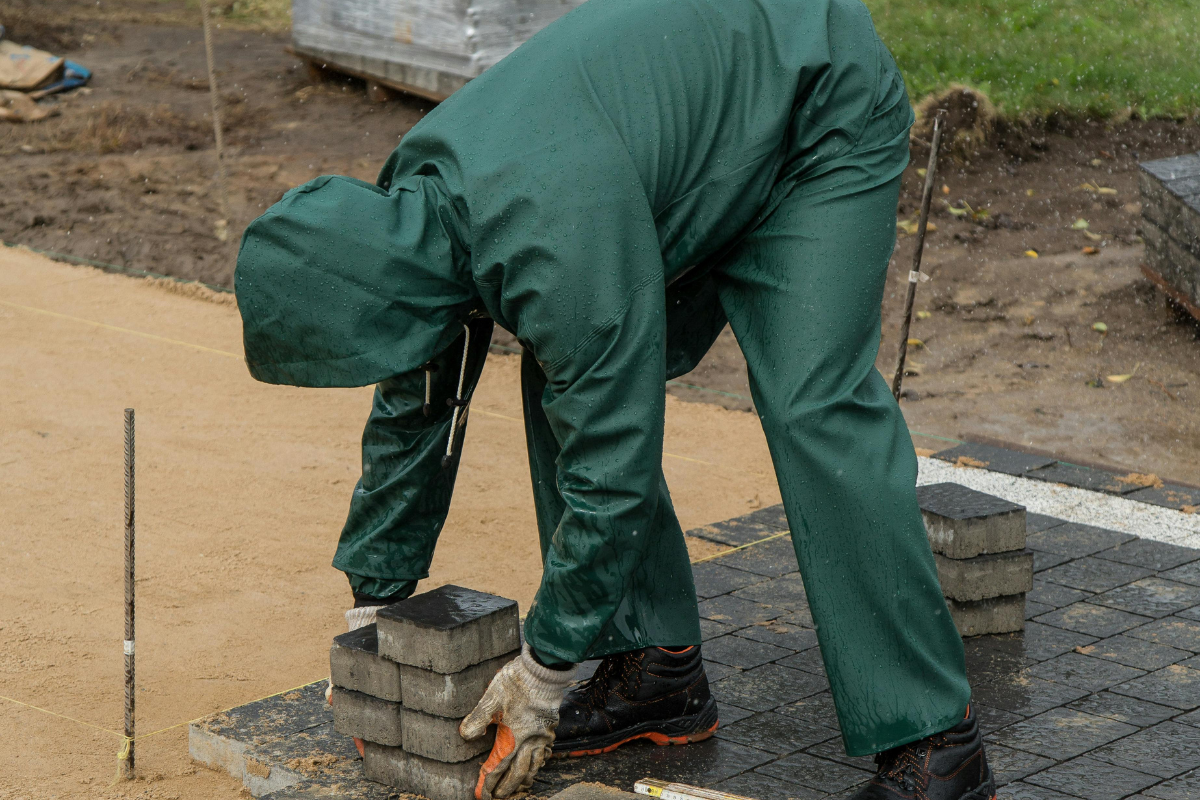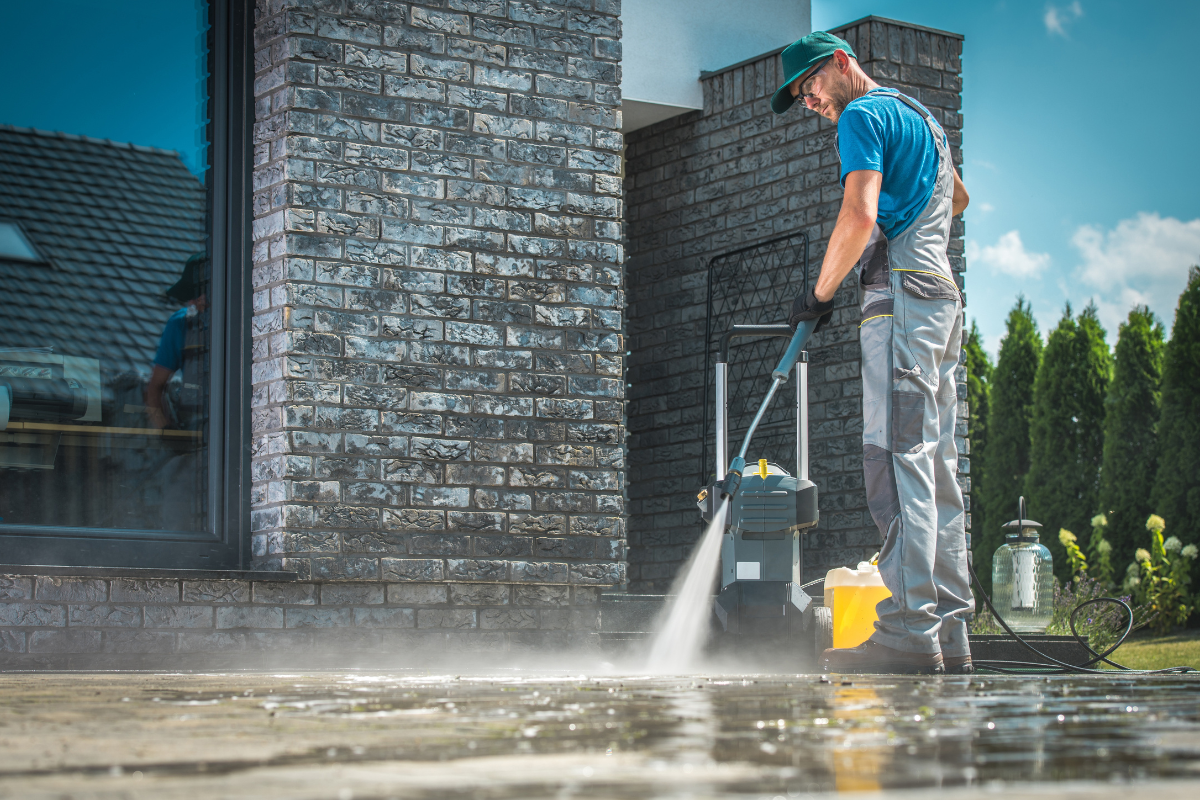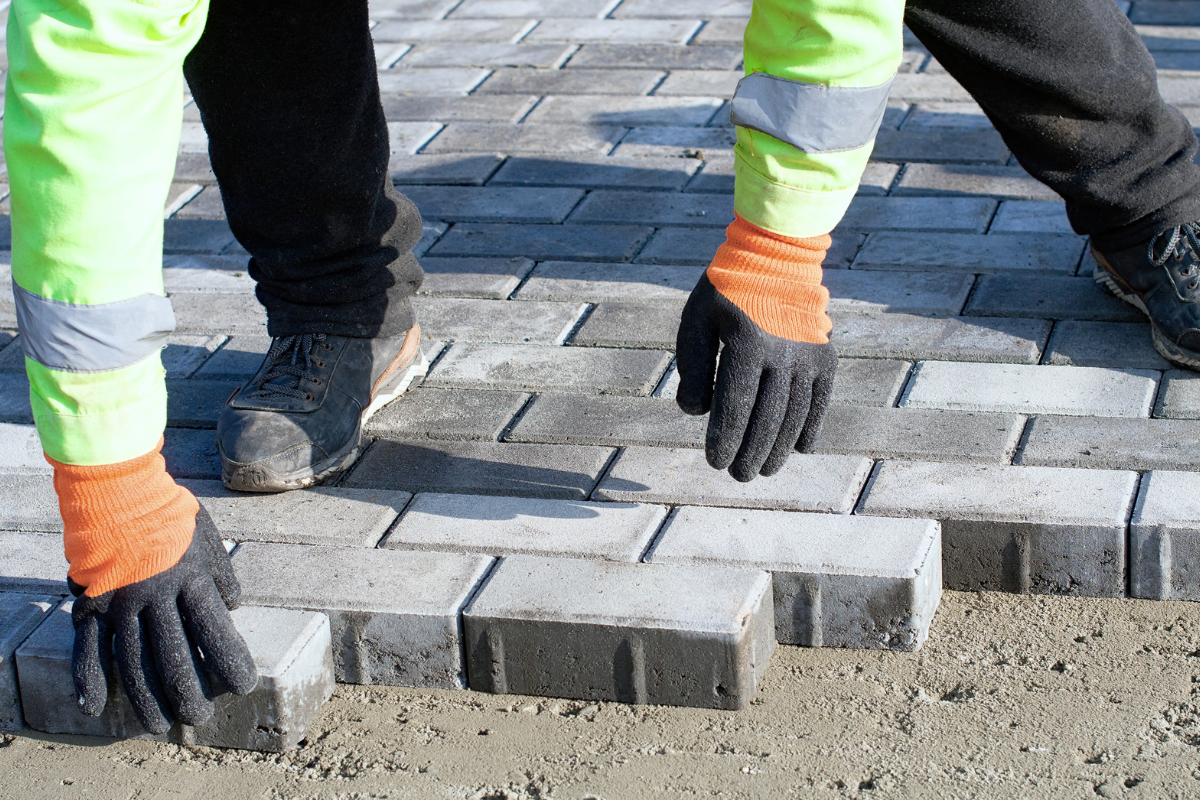
Washing and Sealing: Boosting Your Home’s Curb Appeal Fast



A clean, tight-looking exterior telegraphs care long before someone reaches your front door. When a driveway reads grey and chalky, the eye notices. When pavers look blotchy with sand loss and a few stubborn lichens, the rest of the landscape feels tired. Washing and sealing give you the fastest, most visible lift you can make to a property without tearing anything out. Done correctly, it also buys you years of easier maintenance and helps your hardscape survive sun, rain, and the foot traffic of daily life.
I have walked more driveways and pool decks than I can count, from sunbaked brick in Lutz and Land O’ Lakes to poured concrete shaded by oaks along Tampa’s older streets. The owners who get the best results treat washing and sealing like a system. They respect the chemistry and the mechanics. They also make smart choices about timing and finishes, so the work highlights the surfaces rather than screaming, “fresh seal.” That’s the balance to aim for.
Why washing and sealing work together
Washing removes contaminants, but it also reopens the pores of concrete and pavers. After pressure washing, surfaces dry to a lighter shade because the film of organics, oils, and oxidized binder is gone. In that state, they are more receptive to a paver sealer or concrete sealer. Sealing locks out water and slows ultraviolet damage. It also stabilizes joint sand on interlocking pavers, which keeps your pattern tight and stops ants from mining the joints.
Think of it as a defensive and aesthetic strategy in one. You lift the color and clarity first, then you protect what you restored. Skip the wash, and you trap dirt under a glossy coat. Skip the sealer, and the fresh look fades fast and joints start raveling.
Where the time and money go
There is a reason people type driveway pressure washing near me or pressure washing service when they are getting ready to sell. The visual payoff is immediate. A standard two-car concrete driveway, roughly 400 to 600 square feet, typically takes 60 to 90 minutes to wash when using a surface cleaner and a proper pre-treatment. Add paver cleaning Lutz on a 1,000 square foot driveway with a pool deck, and the clock stretches because paver joints require more attention. Sealing adds a day to the timeline because you need dry surfaces and, in many cases, two coats with a recoat window.
Budgets vary by market. As a ballpark, washing alone often lands around a few hundred dollars for a small driveway, higher for complex surfaces or heavy growth. Paver sealing ranges widely based on chemistry and square footage. The gap in price is usually the concrete paver maintenance chemistry, the prep complexity, and whether the crew uses polymeric sand with joint stabilization.
A tale of two driveways
A homeowner in Lutz called after noticing the subtle wave in her brick driveway had become an obvious dip at the apron. Ants were hauling sand, and a mildew crescent stretched across the north edge. We washed with a mild sodium hypochlorite pre-treatment, surface-cleaned, and rinsed until runoff ran clear. The joints needed sand, so we dried the surface, swept in a polymeric sand, compacted, swept again, then sealed with a penetrating, water-based paver sealer designed for joint stabilization. The dip did not disappear, but the interlock stiffened and the pattern sat tighter. She told me two months later that the ant activity had stopped and her leaf blower handled the weekly cleanup.
A week later, a different call came from a homeowner who had tried a glossy solvent sealer from a big-box store on stamped concrete. It looked great for two weeks, then turned patchy and cloudy. The surface had been damp when he applied it, and moisture got trapped. We had to strip, neutralize, and start over with a breathable penetrating sealer. He lost the wet look he thought he wanted, but he gained a uniform surface that resisted tire marks and did not blush in the afternoon sun.
Understanding your surface before you start
Concrete, clay brick, and concrete pavers all behave differently. Poured concrete is relatively dense, though broom finishes open the surface more than troweled slabs. Clay brick is fired and varies in porosity by manufacturer. Concrete pavers are designed with interlock in mind, leaving space for joint sand, which acts like ballast and drainage. Natural stone adds another layer of nuance. Travertine can soak up product quickly and reacts to acids. Slate often has layers that can flake if you hit them too hard with water pressure.
If you are hiring a pressure washing service, ask what nozzle and pressure they use and how they adjust for the surface. A good operator rarely exceeds 2,500 to 3,000 PSI on residential flatwork when paired with a surface cleaner, and they let the chemistry do the heavy lifting. On pavers, they dial back near edges and use a fan tip for detail work. Corners and vertical faces get rinsed rather than blasted.
The chemistry that does the cleaning
Detergents break surface tension. Oxidizers kill organics. Alkaline degreasers lift oils. You rarely need all of them at once, but you do need to know when to use which. For mildew on concrete or pavers, a diluted sodium hypochlorite solution with a surfactant is the usual choice. Think household bleach strength to slightly stronger, applied, allowed to dwell for several minutes, then rinsed thoroughly. For rust from well water or fertilizer, an acid-based rust remover works, but you must rinse aggressively and neutralize if the surface is sensitive. For leaf tannins, oxygenated cleaners can help, especially on lighter pavers.
The mistake I see most often is over-reliance on pressure without pre-treating. High pressure makes stripes and opens the surface too aggressively. It also atomizes water into the wind, which sends overspray onto landscaping and nearby cars. Good prep and controlled passes save time and protect the surface.
Picking the right sealer for the job
Paver sealing is not one-size-fits-all. Formulation matters. You will usually encounter three categories.
Penetrating sealers: These soak into the surface and leave little to no film. They are hydrophobic, sometimes oleophobic, and they do not change the sheen much. On driveways, they reduce water absorption, slow freeze-thaw damage in colder climates, and resist stains. On pavers, they can be blended to harden joint sand. They remain the most forgiving and are less likely to fail visibly. If you search paver sealer and see no-gloss or natural look, that is this category.
Film-forming sealers: Think acrylic or urethane emulsions that build a thin film. They can deepen color and add sheen from satin to high gloss. They also attract more attention because any failure shows as peeling, whitening, or flaking. They excel on decorative surfaces that are in good condition and fully dry at application. In humid climates, pick breathable formulations to avoid moisture entrapment.
Solvent-based sealers: Often used for high-gloss and color enhancement on pavers or stamped concrete. They bring that wet look when applied well. The trade-offs are odor, VOC restrictions in some regions, and sensitivity to moisture during curing. They can darken the surface substantially, which some homeowners love and others regret the first time they see tire scuffs highlighted at noon.
When clients type paver sealing near me, they typically want color restoration and sand stabilization without slipperiness. A water-based penetrating sealer with joint-stabilizing capability usually hits that brief. For pool decks, prioritize traction. Glossy films on smooth travertine turn slick when wet, which is not a risk worth taking around water. On driveways with heavy vehicle traffic, avoid soft films that scuff or print under hot tires.
How professionals stage the workday
Moisture and weather drive scheduling more than any other factor. The best days are dry with moderate temperatures. In summer humidity, I often wash in the morning, allow midday drying, and start sealing later in the afternoon if the substrate reads dry by moisture meter and the sun is not beating directly on the surface. On pavers with sanding, I stretch the project across two days to respect cure times.
Edges and plants get protected before any chemical touches the surface. We pre-wet sensitive landscaping and keep a rinse hose handy. Door thresholds and garage edges are masked if there is a risk of overspray. Good crews keep their surface cleaner skirt brushes in shape, which reduces misting, and they manage runoff to avoid sending dirty water into storm drains.
The two hidden killers: moisture and contamination
Sealer failures almost always trace back to either trapped moisture or a dirty substrate. Concrete can hold water like a sponge below the surface. What looks dry at noon may still be off-gassing in the afternoon. A cheap but useful tool is a clear plastic square taped to the surface for fifteen minutes. If condensation forms, wait. A moisture meter gives better data.
Contamination comes from many places. Iron-rich well water leaves orange freckles that bloom under clear sealer. Brake dust on driveways acts like graphite. Residual soap or bleach left in joints can react with a film-forming sealer and cause whitening. Rinsing thoroughly, then allowing full dry time, pays for itself.
The practical gains you feel later
The curb appeal bump is obvious. The real payoff shows up months later when pollen and dust rinse off with a hose instead of requiring a full wash. Properly sealed pavers hold joint sand during heavy rain, so you do not wake up to a gritty fan of sand at the sidewalk after every storm. Oil drips wipe up more easily. Algae takes longer to gain a foothold.
Owners sometimes worry a sealer will lock in a stain. That can happen if you seal over it. The fix is to spot-treat stains before sealing and to be realistic. A rust shadow on old concrete may never disappear completely. Aim for improvement and evenness, not perfection. You can often get 80 to 90 percent better, which reads as “new” from the street.
What to ask when hiring
If you are filtering options from a pressure washing service search, focus on process and product knowledge. Ask how they decide between pre-treatments. Listen for a plan to protect landscaping. Ask what paver sealer they recommend and why. Breathable, penetrating options should come up for driveways and walkways. If they insist on a glossy film for everything, keep looking unless that is your specific goal.
Ask about joint sand on paver cleaning jobs. If your pavers show gaps or mushrooms at the edges, they should propose re-sanding and compacting before sealing. Ask for a timeline, including dry-time checkpoints. Weather backup days show they are thinking ahead.
Maintenance after sealing
Even the best sealer does not make surfaces immune to dirt. Maintenance shifts from heavy to light. A quick hose-down every two weeks is enough for many homes. Leaf blowers shine here, moving debris before it breaks down into stains. If algae returns in shaded spots, a mild bleach solution applied, allowed to dwell for a few minutes, then rinsed, keeps it in check without scrubbing.
Most homeowners plan on re-sealing every two to three years for film-formers and three to five years for penetrating sealers, depending on exposure and traffic. High-UV, high-traffic driveways on dark pavers age faster. Pool decks and shaded courtyards hold up longer. Each re-seal goes faster than the first if you keep up with light cleaning.
Where DIY makes sense, and where it doesn’t
I have seen meticulous DIY projects look fantastic. The owners set aside a weekend, rented a surface cleaner, bought a quality sealer, and followed manufacturer instructions. They chose a natural-look penetrating sealer, so any small error did not announce itself. Their preparation time matched the application time, which is the ratio you want.
Where DIY often goes wrong is in two places: stripping and glossy films. Stripping an old sealer requires the right solvent or stripper, patience, and containment. It is messy and not a good first project. Achieving a uniform gloss on large, sunlit surfaces is also tricky. Lap lines, holidays, and moisture entrapment reveal themselves the first time the light hits at an angle. If you want a high-gloss, color-enhanced finish across a large driveway or pool deck, hire a pro with references showing similar work.
Regional realities: Lutz and similar climates
The phrase paver cleaning Lutz shows up often because our climate breeds organics. Afternoon storms, warm nights, and shaded oak canopies create perfect algae conditions. That does not mean power at all costs. It means routine light maintenance, respect for chemistry, and breathable sealers that let moisture move. Well water from irrigation is another local factor. It splatters iron onto pavers and concrete. Installations with high-iron irrigation benefit from a maintenance plan that includes periodic rust removal before those spots cook under the sun and set.
Sand selection matters too. Washed, angular sand stabilizes better than rounded play sand. Polymeric sands vary widely. Some haze easily if you over-apply or leave powder on the paver face, especially under humid conditions. A careful installer compacts, sweeps, and blows the surface clean before misting to activate polymers. Then they watch the weather like a hawk, avoiding activation if rain is imminent.
Common mistakes I still see
People often chase the wet look because of how it pops in photos. That can work on newer, tight pavers with good drainage. On older, porous pavers or shaded sites, high-gloss films highlight every uneven joint and telegraph moisture issues. Another mistake is sealing too soon after installation. Fresh concrete and newly set pavers need time to off-gas and equilibrate. Rushing in the first month can lock in efflorescence, the chalky salts that migrate to the surface.
I also see over-cleaning. Aggressive rotary tips, called turbo nozzles, have a place on tough stains but will etch concrete and shave the noses off pavers if you linger. Etch marks collect dirt later and look like tiger stripes when the surface dries.
Finally, a word about expectations. A thirty-year-old driveway with cracks, patches, and sinking edges will not look new after washing and sealing. It will look cleaner, more uniform, and better maintained. If you want perfect, you are talking about replacement. If you want a fast, cost-effective lift, washing and sealing deliver.
A realistic path to a fast curb appeal lift
Here is a concise, field-tested sequence when you need visible results quickly and want to avoid do-overs.
- Walk the surfaces in good light, mark stains, joint loss, and drainage issues. Note irrigation overspray and rust.
- Pre-treat appropriately: algae and mildew with a bleach solution, rust with a targeted remover, oil with an alkaline degreaser.
- Wash with a surface cleaner for flatwork, rinse thoroughly, then detail edges and joints with a fan tip at controlled pressure.
- Allow full drying. Re-sand paver joints as needed, compact, clean the surface of dust, then apply a breathable, quality paver sealer suited to the surface and exposure.
- Protect from water during cure. Inspect the next day for any holidays or light spots and address promptly.
Picking products without getting lost in labels
Manufacturers market hard. Look for three anchors instead of slogans. First, the solids content. Higher solids in film-formers usually mean more build per coat, but also more risk of whitening if trapped moisture is present. Second, vapor permeability. On any exterior horizontal, breathable formulations reduce failure risk. Third, stain resistance and recoat compatibility. A sealer that resists automotive oils and allows easy recoat in two to three years saves money.
When in doubt, sample. Most suppliers sell quarts. Pick an inconspicuous corner and apply according to the label. Watch for color shift, sheen, and early morning moisture behavior. If it passes the small test, it will usually behave on the big job.
Why the “near me” search matters
People add near me to paver sealing and pressure washing queries because local conditions dictate best practices. Water chemistry, common paver brands, and weather patterns change across regions. A local contractor knows which clay bricks tend to effloresce, which polymeric sands haze in summer humidity, and how long a slab stays damp after an afternoon storm. The right knowledge trims the guesswork, and in this trade guesswork is the enemy of durable results.
Final thoughts from the driveway
I have watched neighbors come out and stare at their own driveways after a wash next door. Clean hardscape changes how a street feels. You do not have to overhaul your landscape or repaint your house to get that effect. A well-executed washing and sealing project brings back color, tightens joints, and gives you surfaces that shrug off daily mess. The key is to respect the materials. Let chemistry do the work. Choose a paver sealer that suits your goals and your surface, not just the gloss on the label. If you hire, hire for judgment as much as for equipment.
Whether you are listing a home or just tired of the dingy film that crept up on you season by season, start with a thoughtful clean. Seal what you restore. Two days later, the place feels sharper, and you will spend the next couple of years maintaining with a hose and a leaf blower rather than a full weekend on the end of a wand. That is curb appeal you can bank on, fast and without drama.
Bulletproof Pavers
Address: 1523 Green Meadow Dr, Lutz, FL 33549
Phone: (813) 401-0693